The Gravity Heresy: MOND vs Dark Matter Theory Explained

TL;DR: Lunar mass drivers—electromagnetic catapults that launch cargo from the Moon without fuel—could slash space transportation costs from thousands to under $100 per kilogram. This technology would enable affordable space construction, fuel depots, and deep space missions using lunar materials, potentially operational by the 2040s.
Picture a slingshot stretched across a lunar crater, powerful enough to hurl shipping containers into orbit without burning a drop of fuel. That's the promise of lunar mass drivers—electromagnetic launch systems that could turn the Moon into humanity's first interplanetary freight hub. While rocket launches from Earth cost thousands of dollars per kilogram, these electromagnetic catapults could slash that figure by orders of magnitude, fundamentally reshaping how we think about space economics.
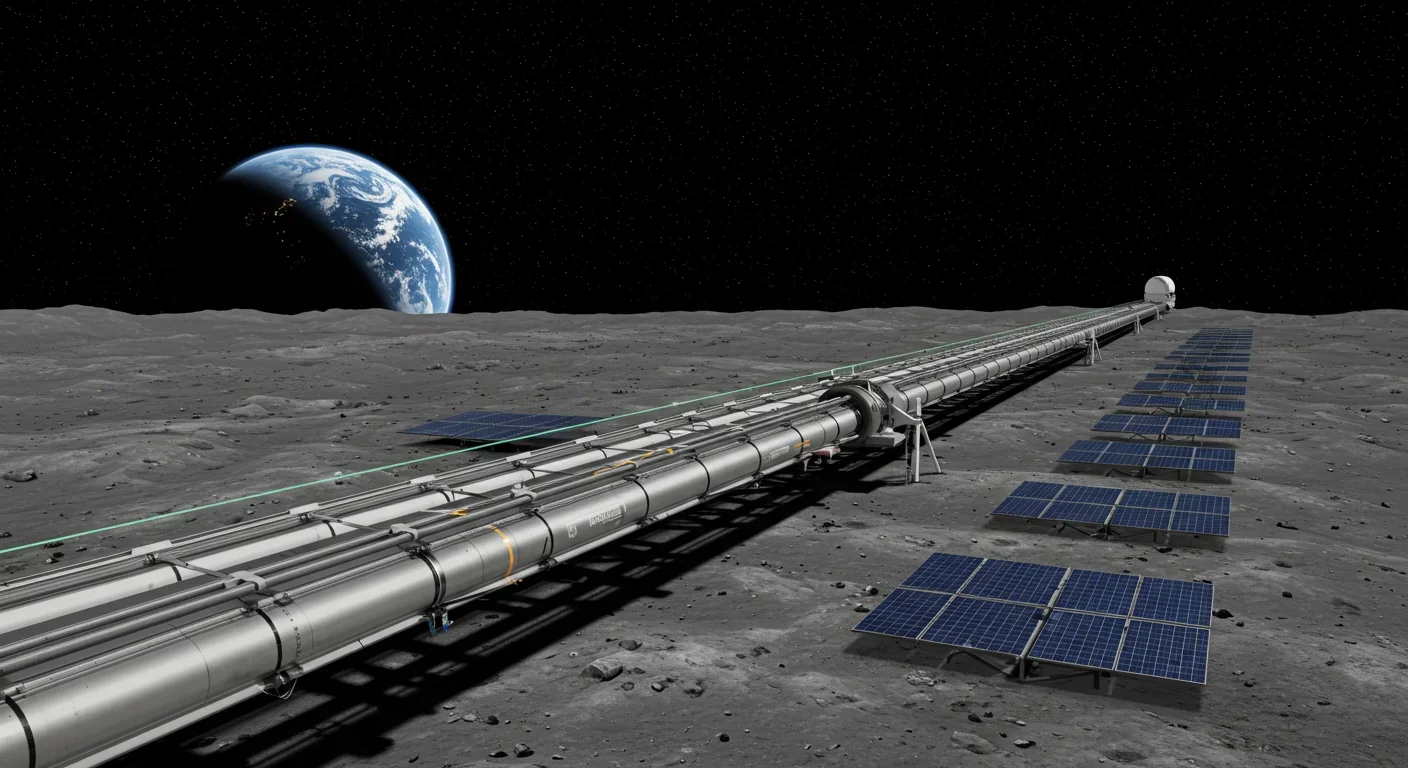
The concept sounds like science fiction, but the physics are surprisingly straightforward. The Moon's weak gravity—just one-sixth of Earth's—means cargo only needs to reach 1.7 kilometers per second to achieve orbit, compared to Earth's daunting 11.2 km/s requirement. Add in the absence of atmospheric drag, and you've got ideal conditions for electromagnetic launch. What seemed impossible on Earth becomes elegantly practical 384,000 kilometers away.
At its core, a mass driver works like a linear motor stretched along a track. Electromagnetic coils pulse in sequence, each one accelerating a payload-carrying bucket a bit faster until it reaches escape velocity. Think of it as a railgun lying flat, trading destructive force for sustained acceleration gentle enough not to pulverize delicate cargo.
The Moon's geology actually helps. NASA's GRAIL mission mapped gravitational anomalies across the lunar surface—regions where concentrated mass beneath the surface creates stronger local gravity. Finnish physicist Pekka Janhunen proposed positioning mass drivers in these zones, where the extra gravitational assist could boost payloads even further with no additional energy cost.
Modern electromagnetic launch systems have proven themselves on Earth. The U.S. Navy's EMALS has catapulted fighter jets from carrier decks since 2017, accelerating 30-ton aircraft to flying speed in under two seconds.
Modern electromagnetic launch systems have proven themselves on Earth. The U.S. Navy's Electromagnetic Aircraft Launch System (EMALS) has catapulted fighter jets from carrier decks since 2017, accelerating 30-ton aircraft to flying speed in under two seconds. China recently demonstrated a capacitor-free coilgun firing 3,000 rounds per minute—proof that electromagnetic propulsion technology continues advancing rapidly.
The engineering challenge isn't whether electromagnetic launch works, but adapting it to lunar conditions. The Moon's surface temperature swings from 127°C in sunlight to -173°C in shadow. Lunar dust—fine as talcum powder and electrostatically charged—infiltrates everything. Any mass driver would need robust seals, thermal management systems, and materials that won't fatigue under millions of launch cycles.
Israeli scientists have already begun tackling these problems. Researchers at Tel Aviv University developed an electromagnetic launcher specifically designed for lunar applications, using lightweight materials that could be manufactured partially from lunar regolith itself. The prototype weighs just 40 kilograms—critical when every gram costs money to transport from Earth.
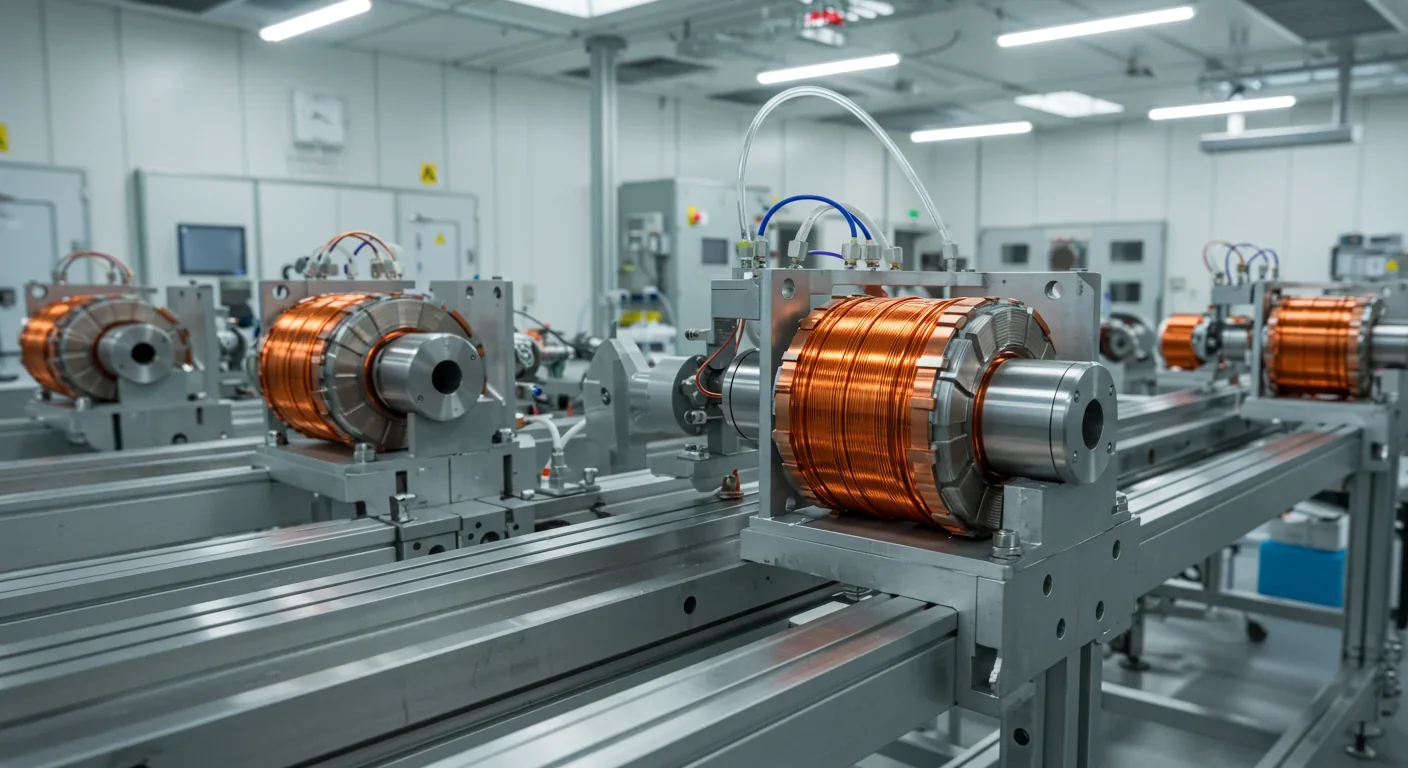
The economic case for lunar launch comes down to tyranny of the rocket equation. Chemical rockets are spectacularly inefficient because they must carry all their fuel with them, which requires more fuel to lift that fuel, which requires even more fuel... The exponential growth means roughly 90% of a rocket's mass at liftoff is propellant.
A mass driver eliminates fuel entirely. Solar panels or small nuclear reactors generate electricity, electromagnetic coils convert it to kinetic energy, and payloads accelerate down the track. The only consumables are replacement parts and the occasional bucket.
"Current estimates suggest launching material from Earth costs $2,000 to $10,000 per kilogram. A mature lunar mass driver could potentially launch material for under $100 per kilogram—possibly as low as $10 per kilogram with economies of scale."
— Space Economics Analysis
Current estimates suggest launching material from Earth costs $2,000 to $10,000 per kilogram, even with SpaceX's reusable rockets. A mature lunar mass driver could potentially launch material for under $100 per kilogram—possibly as low as $10 per kilogram with economies of scale. That's not a marginal improvement; it's a paradigm shift comparable to containerized shipping replacing break-bulk cargo.
This economics reshapes what becomes possible in space. Building large structures—space stations, solar power satellites, or spacecraft for deep space missions—suddenly becomes affordable when you're not paying rocket prices for raw materials. The Moon's regolith contains silicon, iron, aluminum, titanium, and oxygen—basically everything you need for space construction.
In situ resource utilization (ISRU) transforms from a nice-to-have into economic necessity. Mine lunar regolith, process it into metal ingots or prefab components, launch them to orbital facilities for final assembly. The only things you'd ship from Earth are complex electronics, specialized materials, and humans.
Gerard K. O'Neill recognized this potential back in the 1970s. The Princeton physicist's mass driver concept was central to his vision of orbital colonies—giant rotating cylinders housing thousands of people, built from lunar materials. His calculations showed that beyond a certain threshold, building in space from lunar resources costs less than hauling everything up from Earth's gravity well.
What seemed like 1970s space optimism increasingly looks like sound engineering. The difference between O'Neill's era and ours is that we're actually returning to the Moon.
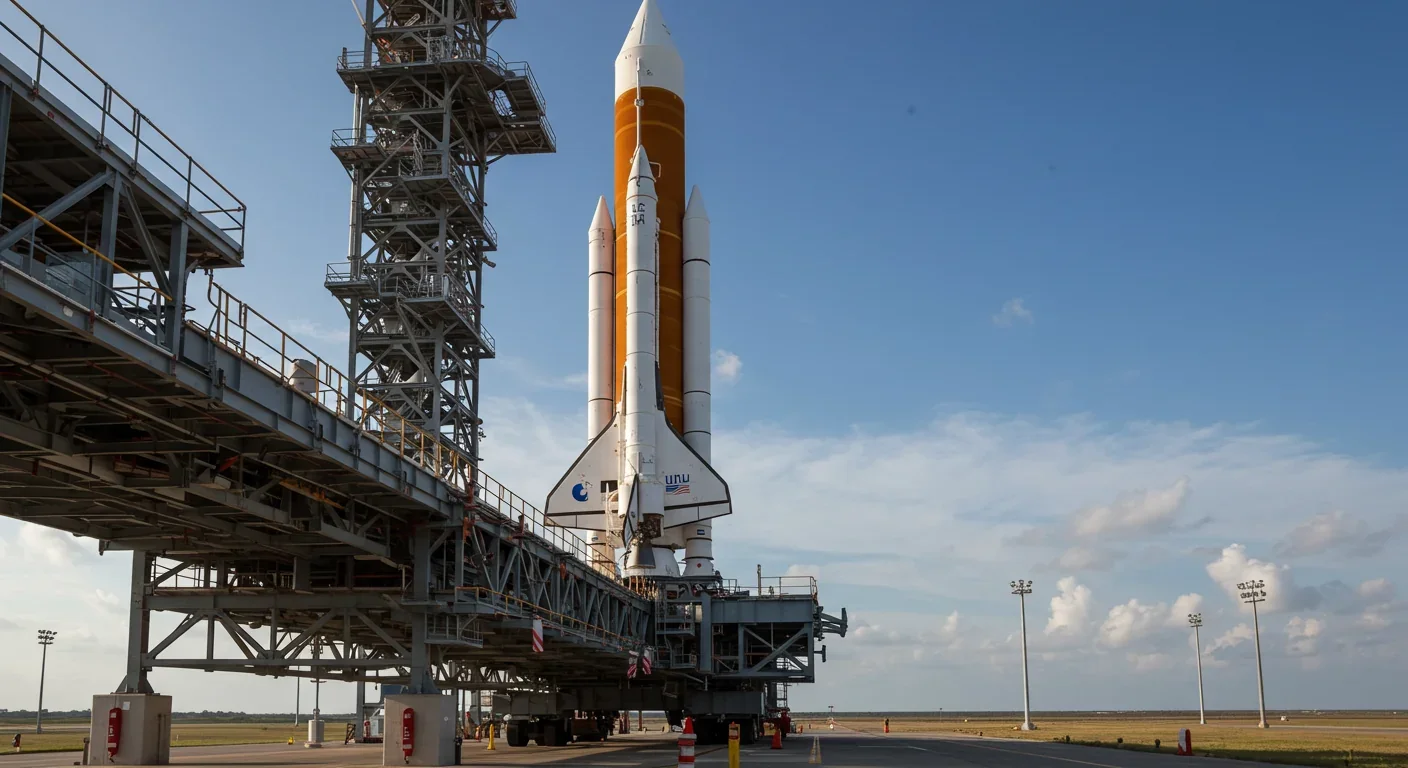
NASA's Artemis program provides the foundation. The agency plans permanent lunar presence by the 2030s—habitats, rovers, and resource extraction equipment. NASA's Commercial Lunar Payload Services (CLPS) contracts have already delivered payloads to the surface, with more missions planned. Each one tests technologies necessary for sustained operations.
NASA's lunar drill technology recently passed field tests, demonstrating automated excavation in lunar-like conditions. Mining equipment, processing facilities, and power infrastructure—all prerequisites for mass driver operations—are actively moving from concept to hardware.
The mass driver itself remains at earlier development stages, but the enabling technologies are maturing. Electromagnetic propulsion research continues through military applications like railguns and electromagnetic launchers. Superconducting magnets become more efficient and compact. Power systems shrink while energy storage improves.
Private companies eye lunar resources with increasing seriousness. Multiple firms have announced plans for lunar mining operations targeting water ice, rare earth elements, and bulk materials. They'll need cost-effective ways to export their products—either back to Earth or to orbital customers. Mass drivers slot into these business models as essential infrastructure, like railroads enabled continental development.
Japan's space agency JAXA is exploring partnerships for lunar resource utilization. Chinese space plans include long-term lunar presence with potential industrial applications. Multiple nations developing similar capabilities suggests convergent technological evolution.
Japan's space agency JAXA is exploring partnerships for lunar resource utilization. Chinese space plans include long-term lunar presence with potential industrial applications. While international cooperation remains uncertain, multiple nations developing similar capabilities suggests convergent technological evolution.
The timeline keeps compressing. What seemed like far-future technology 20 years ago now features in decade-scale planning documents. Artemis missions are launching. Lunar drills work. ISRU demonstrations succeed. Each milestone brings mass drivers closer to practical implementation.
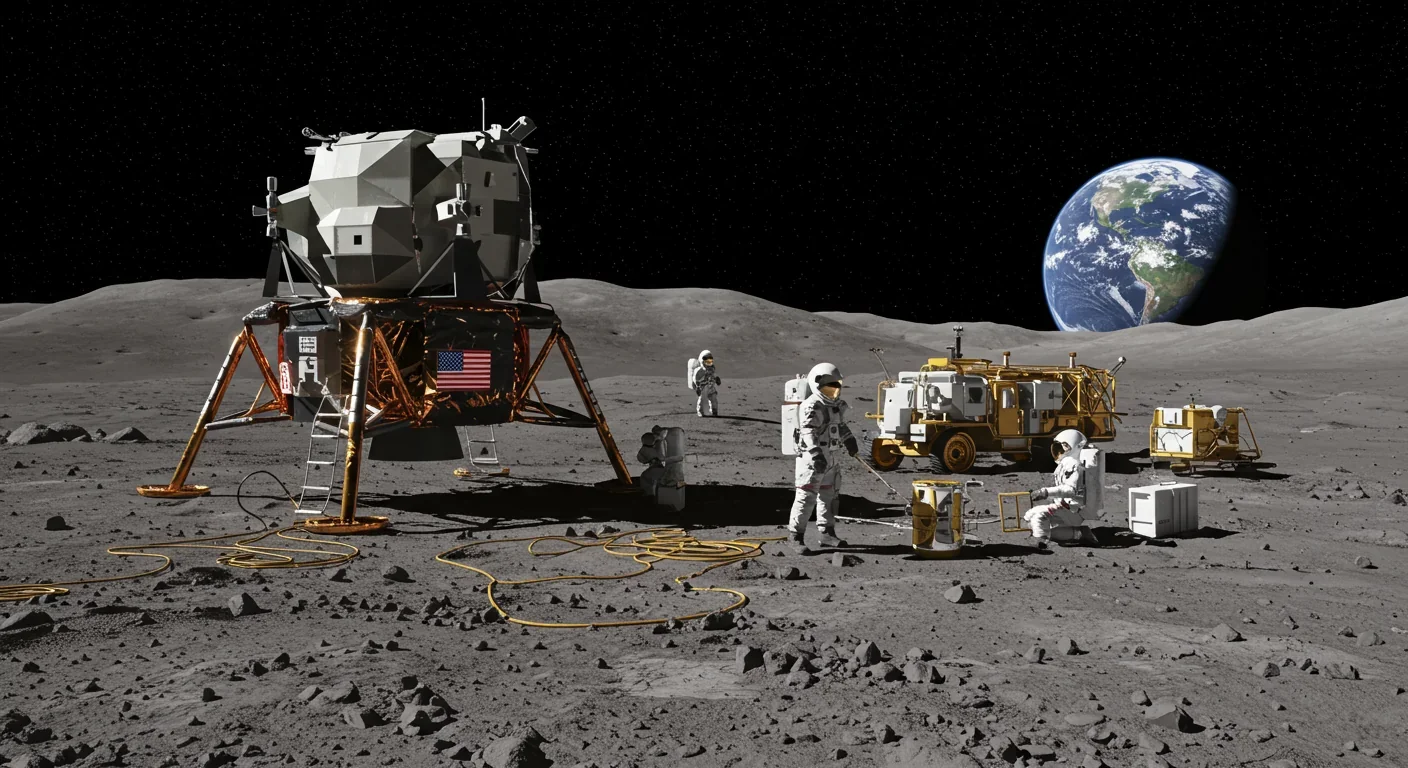
Building a multi-kilometer electromagnetic launcher on an airless world presents some interesting problems. Start with power requirements. Accelerating payloads to 1.7 km/s requires substantial energy—likely megawatts for continuous operations. Solar panels work but require large arrays and energy storage for lunar nights lasting two weeks. Small nuclear reactors might prove more practical, but they add regulatory and safety complexity.
The launch track must be precisely aligned and maintained. Even slight warping from thermal expansion throws off trajectories. Lunar quakes—yes, the Moon experiences seismic activity—could misalign sections. You'd need active monitoring and adjustment systems, plus robust structural engineering to handle stress cycles.
Then there's that dust. Lunar regolith particles are jagged—more like shattered glass than beach sand—because without weathering by wind and water, they never get rounded. These particles carry static charge and stick to everything. They're abrasive enough to wear through spacesuits. Any moving parts exposed to lunar dust face accelerated wear unless sealed, but seals themselves are vulnerable.
Payload packaging presents unique constraints. Whatever you're launching must survive extreme acceleration—potentially hundreds of times Earth's gravity over a few seconds. Forget shipping delicate instruments or life support equipment. Mass drivers work best for robust bulk materials: metal ingots, processed regolith, water ice, propellant, structural components.
The receiving end matters too. Packages launched into orbit don't just park themselves in convenient locations. They need targeting systems, minor trajectory correction capability, and some way to rendezvous with collection facilities. Miss your target, and debris becomes a hazard to operational spacecraft.
Environmental considerations complicate matters. While the Moon lacks ecosystems to damage, the Outer Space Treaty requires avoiding harmful contamination and preserving sites of scientific interest. Any large-scale industrial operation faces scrutiny about exhaust plumes, debris, and impact on pristine environments. Launching materials doesn't pollute like chemical rockets, but it's not impact-free.
Mass drivers also lock you into fixed launch windows and trajectories based on the Moon's rotation and target orbits. Unlike rockets that can launch in any direction, electromagnetic tracks point in specific directions. You'd likely need multiple launchers or complex track switching systems to serve various destinations.
These challenges aren't showstoppers—they're engineering problems with engineering solutions. But they do mean first-generation systems will be less capable and more expensive than ultimate potential suggests.
Raw materials top the list. The Moon's crust contains abundant aluminum, silicon, and oxygen—the building blocks of aluminum-silicate alloys useful for space construction. Process regolith into ingots, launch them to orbital manufacturing facilities, and you've got material for station hulls, radiation shielding, and structural components without the Earth launch cost.
Water ice from permanently shadowed craters represents valuable cargo. Split water into hydrogen and oxygen, and you've got rocket propellant worth its weight in gold at orbital fuel depots. A mass driver could launch ice blocks to collection points, where solar-powered electrolysis creates propellant for spacecraft heading deeper into the solar system.
"Propellant depots transform deep space access. With affordable propellant available in orbit, spacecraft could launch with minimal fuel, tank up in orbit, and accelerate to destinations with far greater cargo capacity."
— Space Logistics Analysis
Propellant depots transform deep space access. Currently, interplanetary missions carry all their fuel from Earth—severely limiting payload capacity. With affordable propellant available in orbit, spacecraft could launch with minimal fuel, tank up in orbit, and accelerate to destinations with far greater cargo capacity. The economics resemble how aviation transformed when refueling stations enabled longer flights.
Construction materials enable ambitious projects like large space telescopes, solar power satellites, and orbital habitats. The James Webb Space Telescope cost $10 billion partly because every component launched from Earth. Future space observatories could use lunar materials for support structures, thermal shields, and non-critical components, reserving precious Earth-launched mass for irreplaceable optical systems.
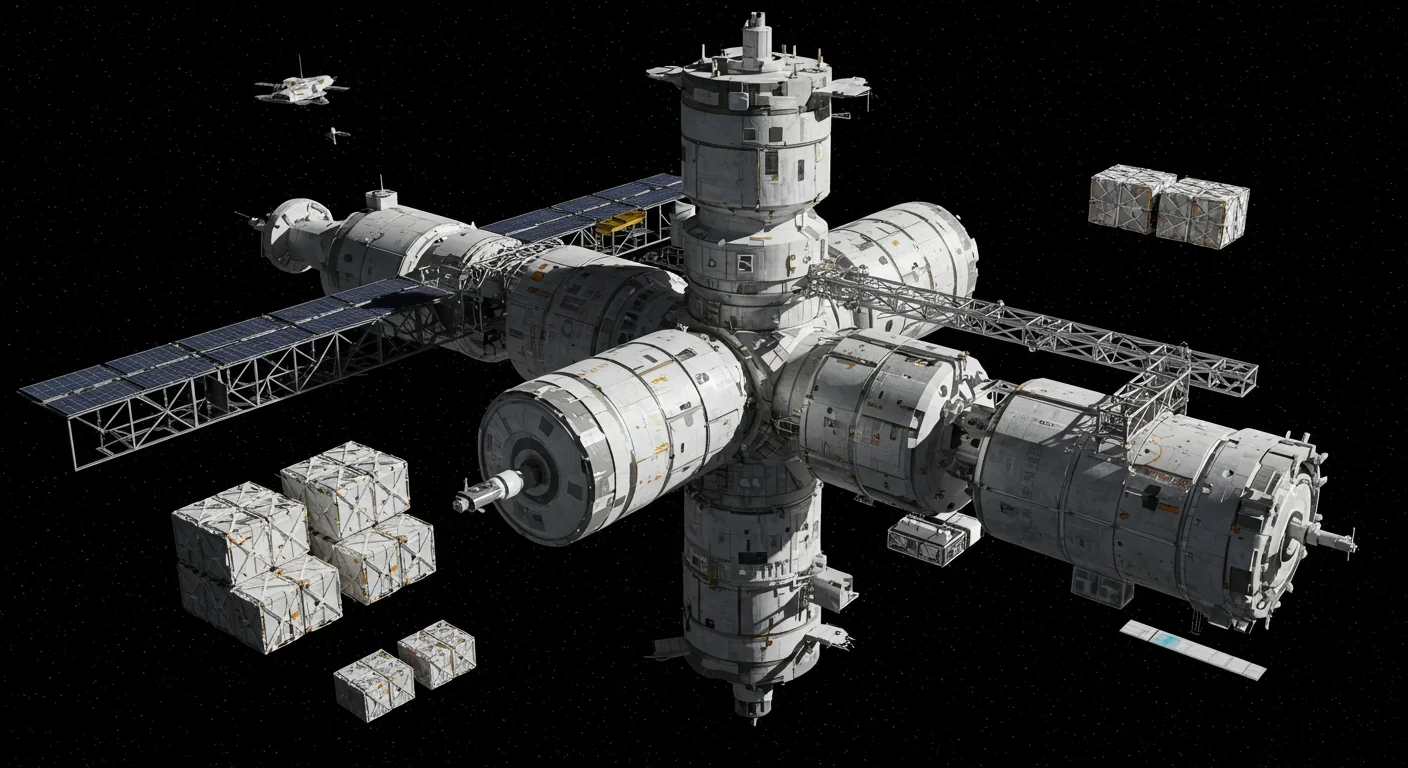
Some proposals imagine even more ambitious applications. Could you launch space tethers or components for tethered ring systems? What about materials for building O'Neill cylinders—those rotating space habitats capable of housing thousands? The feasibility depends on how cheaply mass drivers can launch material, but the vision is clear: lunar industry enables space infrastructure that enables everything else.
Surprisingly, you might launch products back to Earth. Certain specialty materials or products manufactured in microgravity could justify return shipping costs if orbital facilities exist and transportation becomes cheap enough. That's speculative today but could emerge as lunar and orbital industry matures.
Realistic estimates put first-generation mass drivers in the 2040s at earliest. That might sound distant, but consider the prerequisites building now. Artemis missions throughout the 2020s establish lunar presence. ISRU demonstrations prove resource extraction feasibility. Power systems, robotics, and manufacturing technology all advance.
The 2030s likely see initial lunar industrial operations—small-scale mining, regolith processing, perhaps 3D printing of basic structures. These early operations need conventional rocket transport but prove commercial viability and develop operational experience. Think of them as the lunar equivalent of pilot projects before full-scale industrial rollout.
First-generation mass drivers in the 2040s might be modest: short tracks, low launch rates, limited payloads. They'd prove the concept, work out operational issues, and demonstrate economic advantages. Early systems might cost more than projected because learning curve costs get amortized over limited launches.
Each ton of material launched via mass driver instead of rockets improves the business case for expansion. As launch volume increases, per-unit costs decrease. Lower costs enable new applications, which increases volume further.
But here's where network effects kick in. Each ton of material launched via mass driver instead of rockets improves the business case for expansion. As launch volume increases, per-unit costs decrease. Lower costs enable new applications, which increases volume further. By the 2050s, we could see multiple mass drivers supporting substantial orbital industry.
Compare it to historical infrastructure development. Railroads didn't appear fully formed—they started with short lines, gradually expanded, and ultimately transformed economies. Container shipping took decades to achieve global dominance. Successful technologies follow S-curves: slow initial adoption, rapid growth phase, eventual maturity.
Some wildcards could accelerate timelines. Breakthrough in power generation or electromagnetic propulsion might reduce costs or complexity. International collaboration might pool resources and accelerate development. Resource discoveries—perhaps more accessible water ice or valuable rare earth deposits—could strengthen economic incentives.
Conversely, setbacks could delay implementation. If early Artemis missions encounter unexpected challenges, lunar industrial timelines slide right. Budget constraints, technical failures, or shifting political priorities all pose risks. Space development has historically taken longer and cost more than initial projections.
Still, the overall trend points toward lunar industrialization. Too many nations and companies are investing serious money for this to remain purely aspirational. The Moon is happening—mass drivers are question of when, not if.
Who controls lunar launch infrastructure? That question matters because mass drivers represent strategic assets—dual-use technology with military implications. Electromagnetic launchers can hurl payloads anywhere in the Earth-Moon system, including potentially problematic trajectories.
The Outer Space Treaty prohibits weapons of mass destruction in space but doesn't clearly address kinetic weapons or dual-use infrastructure. A mass driver built for peaceful commerce could theoretically launch kinetic impactors—though doing so would violate international norms and invite retaliation. The ambiguity complicates governance discussions.
Multiple nations pursuing independent lunar programs creates both opportunities and tensions. Cooperation might produce shared infrastructure with divided costs and open access. Competition might mean redundant facilities built for strategic autonomy. History suggests a mix—some collaboration where interests align, rivalry where they diverge.
Resource rights remain contentious. The Outer Space Treaty forbids territorial claims but permits resource extraction. How that works in practice—especially when valuable deposits are finite—remains unclear. If lunar resources become economically significant, expect legal disputes and pressure to revise international frameworks.
Access equity raises questions. If lunar launch infrastructure dramatically reduces space transportation costs but remains controlled by a few nations or corporations, it could widen gaps between spacefaring and non-spacefaring nations. Some envision mass drivers as global commons; others see competitive advantage worth protecting.
Environmental governance needs attention. While the Moon lacks life to protect, scientific communities argue for preserving sites of geological interest and minimizing industrial impact on astronomical observations. Balancing economic development with scientific preservation requires international coordination.
These issues aren't purely hypothetical. The Artemis Accords—signed by over 30 nations—attempt to establish norms for lunar activity, including resource extraction, safety zones, and heritage site protection. Whether these norms hold as economic stakes increase remains to be seen.
China's independent lunar program complicates governance. As the only major space power not participating in Artemis, China's unilateral actions could set competing precedents. If Chinese and American mass drivers operate under different regulatory frameworks, it could fragment space governance.
Private enterprise adds another layer. Companies investing in lunar infrastructure want property rights protection and regulatory predictability. Too much regulation stifles investment; too little creates conflicts. Finding the right balance takes careful diplomacy and adaptive governance.
What does workforce development look like for mass driver operations? You'll need electrical engineers specializing in electromagnetic propulsion systems—closer to rail gun experts than aerospace traditional. Materials scientists who understand regolith processing and space manufacturing. Robotics specialists, since much construction happens via teleoperation or autonomy.
Mining engineers face unique challenges adapting terrestrial techniques to vacuum and low gravity. Excavation, processing, and material handling all work differently without atmosphere or strong gravity. Training programs are starting to address these gaps, but there's no substitute for actual operational experience.
Operations specialists will need skills spanning multiple disciplines. Managing a lunar mass driver means understanding power systems, thermal control, electromagnetic physics, orbital mechanics, and remote equipment maintenance. Cross-training becomes essential because small crews handle diverse responsibilities.
Software engineers face interesting problems. Autonomous systems must handle routine operations while recognizing novel situations requiring human intervention. The 1.3-second communication delay between Earth and Moon means real-time control isn't practical—systems must respond independently to immediate issues.
Economic analysts and business specialists will be crucial because lunar industry only succeeds if it makes financial sense. Someone must assess investment returns, optimize logistics, price services competitively, and identify profitable applications. Technical possibility doesn't guarantee commercial viability.
Policy experts and legal specialists need to navigate evolving space governance. International law, resource rights, environmental regulations, and safety standards all require professional expertise to ensure compliant operations.
Educational institutions are beginning to respond. Several universities now offer space resources or space mining programs. Industry partnerships provide practical experience. Still, we're training people for jobs that don't quite exist yet—always a challenge when technology moves faster than curriculum development.
The good news? Much of this builds on existing skills adapted to new contexts. Power systems engineering, robotics, materials science, and operations management all have terrestrial equivalents. The learning curve is steep but not insurmountable.
Step back from technical details and consider implications. For most of human history, we've been confined to Earth's surface. Chemical rockets barely let us escape—barely, expensively, and dangerously. Space remains something we visit briefly rather than inhabit permanently.
Lunar mass drivers represent potential transition from visiting space to living there. Cheap material transport enables infrastructure that makes space accessible: fuel depots, construction facilities, staging points for deeper missions. Each capability unlocks others in cascading expansion.
The economic comparison to historical infrastructure development isn't hyperbole. Railroads didn't just move goods faster than horses—they transformed where people lived, what industries existed, and how society organized itself. Interstate highways, container shipping, fiber optic networks—each infrastructure layer enabled unimagined applications.
What becomes possible if launching material into space costs 1% of current prices? Enormous space telescopes revolutionizing astronomy. Solar power satellites beaming clean energy to Earth. Manufacturing in microgravity producing materials impossible to create under gravity. Spacecraft built in orbit heading to asteroids, Mars, and beyond.
Some envision permanent orbital communities supported by lunar resources—O'Neill's cylinder cities becoming reality. Others imagine lunar cities themselves, with mass drivers launching exports to orbital customers. The Moon as industrial hub and Earth as nature preserve—the ultimate zoning solution.
More immediately, mass drivers could accelerate Mars colonization by providing fuel and supplies for interplanetary journeys. Instead of carrying everything from Earth, Mars missions could launch lean and tank up with lunar propellant and material. That alone could advance crewed Mars missions by a decade.
The philosophical shift matters too. Once humanity establishes self-sufficient industrial operations beyond Earth—capable of building and launching without depending on terrestrial resources—we've crossed a threshold. We become a spacefaring civilization in substance, not just aspiration.
Obviously, challenges remain. Technical obstacles, economic uncertainties, political complications, and unexpected setbacks will all occur. Space development has never followed smooth trajectories. But the direction seems clear: lunar mass drivers transition from science fiction to engineering challenge to operational reality.
The question isn't whether we'll build electromagnetic launchers on the Moon. The question is how quickly we'll move from first experimental tracks to the infrastructure supporting permanent space presence. History suggests we'll be surprised by what becomes possible once we start.
What should individuals, organizations, and societies do as this future approaches? For students and professionals, space-related skills are increasingly valuable. Engineering, robotics, materials science, and operations management all have expanding opportunities as space industry grows.
Companies should monitor developments and consider strategic implications. Orbital manufacturing, space logistics, and lunar resource utilization all represent emerging markets. Early movers gain advantages, but timing matters—too early means wasted investment, too late means missed opportunities.
Policymakers need to engage with governance questions while technology remains flexible. Waiting until mass drivers are operational to hash out resource rights and safety regulations invites conflicts. International frameworks work best when established before economic stakes get too high.
Research institutions should prioritize space-relevant studies. We need better understanding of lunar regolith properties, electromagnetic launch dynamics, orbital debris mitigation, space construction techniques, and closed-loop life support. Each advance makes sustainable space presence more feasible.
Educational systems should teach space literacy—not just technical skills but also economic, political, and ethical dimensions. Future generations will navigate opportunities and challenges of space development. They need conceptual frameworks to make informed decisions.
Public engagement matters. Space development requires sustained investment over decades. That needs political support, which requires public understanding of benefits and trade-offs. Communicating complex topics accessibly is crucial for maintaining momentum.
Most fundamentally, we need mindset shifts. Space is transitioning from extreme environment visited by elite specialists to frontier where ordinary people live and work. That transition won't happen overnight, but mass drivers and similar infrastructure are what make it possible.
The electromagnetic catapults being designed today are more than clever engineering. They're tools for opening the solar system to human activity. Whether that future excites or concerns you depends on your values and vision. But it's coming either way.
The tracks are being laid. The power systems designed. The payloads identified. Somewhere in the 2040s, if projections hold, humanity will sling our first cargo into orbit using nothing but magnets and electricity. That launch will be a beginning, not an ending—the first shipping container in what could become a trillion-dollar space economy.
Worth keeping an eye on. The future is being built, one electromagnet at a time.

Lunar mass drivers—electromagnetic catapults that launch cargo from the Moon without fuel—could slash space transportation costs from thousands to under $100 per kilogram. This technology would enable affordable space construction, fuel depots, and deep space missions using lunar materials, potentially operational by the 2040s.

Ancient microorganisms called archaea inhabit your gut and perform unique metabolic functions that bacteria cannot, including methane production that enhances nutrient extraction. These primordial partners may influence longevity and offer new therapeutic targets.
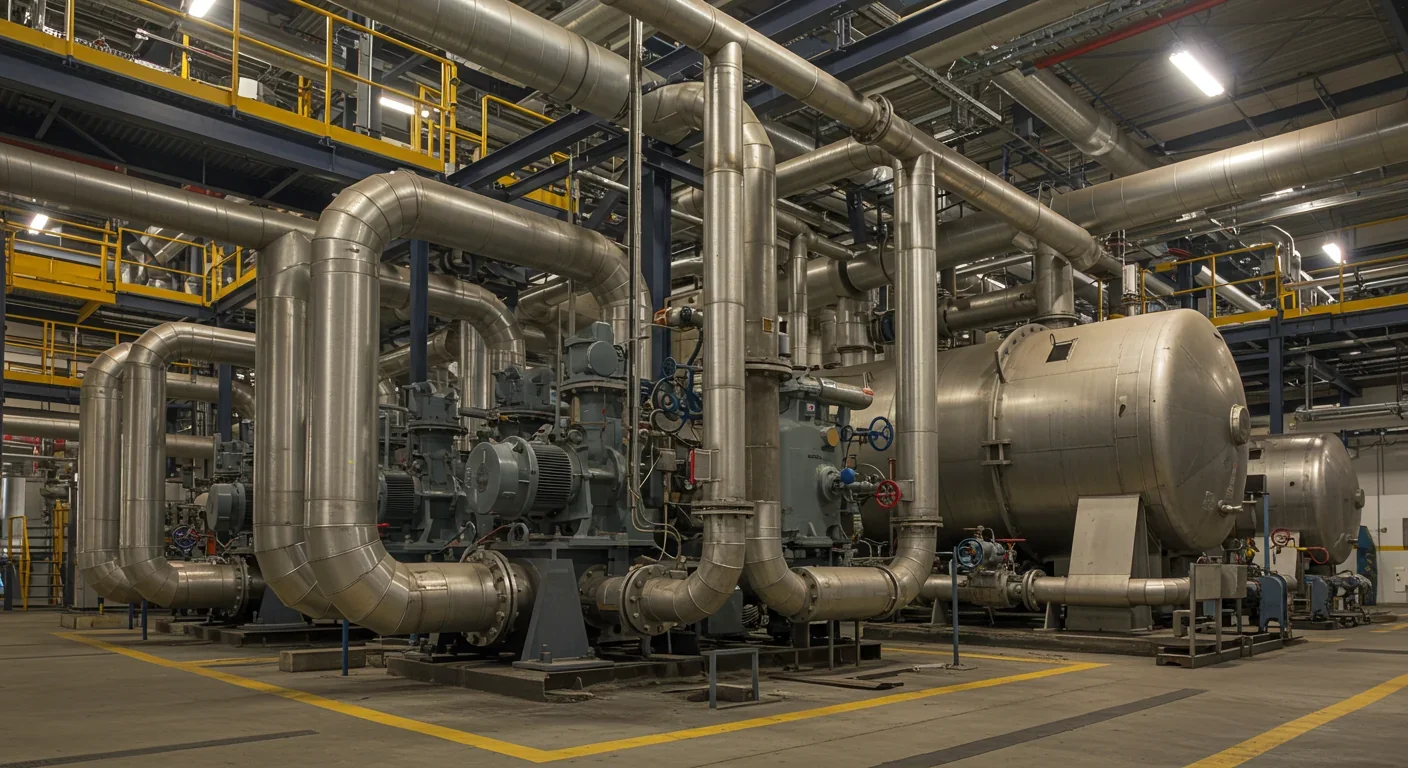
CAES stores excess renewable energy by compressing air in underground caverns, then releases it through turbines during peak demand. New advanced adiabatic systems achieve 70%+ efficiency, making this decades-old technology suddenly competitive for long-duration grid storage.

Human children evolved to be raised by multiple caregivers—grandparents, siblings, and community members—not just two parents. Research shows alloparenting reduces parental burnout, improves child development, and is the biological norm across cultures.

Soft corals have weaponized their symbiotic algae to produce potent chemical defenses, creating compounds with revolutionary pharmaceutical potential while reshaping our understanding of marine ecosystems facing climate change.

Generation Z is the first cohort to come of age amid a polycrisis - interconnected global failures spanning climate, economy, democracy, and health. This cascading reality is fundamentally reshaping how young people think, plan their lives, and organize for change.
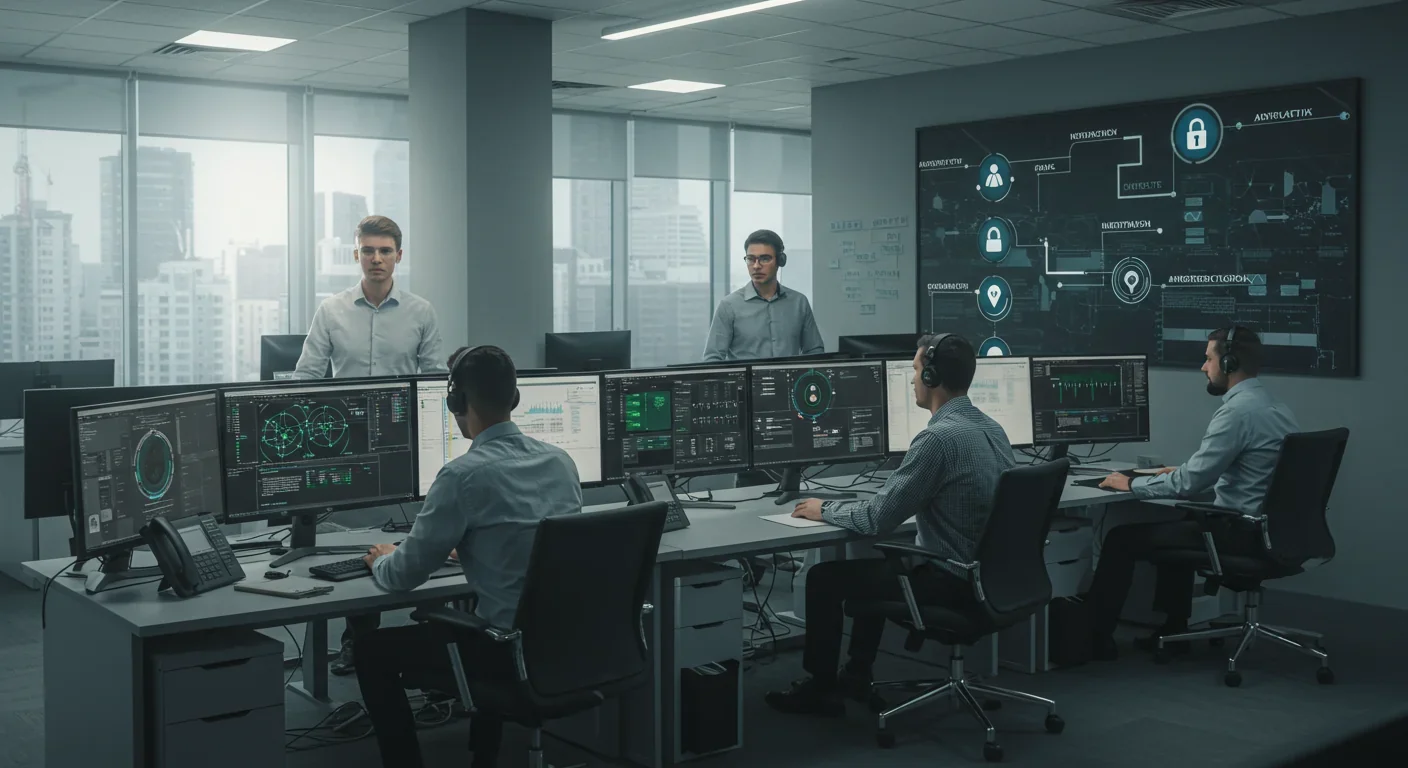
Zero-trust security eliminates implicit network trust by requiring continuous verification of every access request. Organizations are rapidly adopting this architecture to address cloud computing, remote work, and sophisticated threats that rendered perimeter defenses obsolete.